New Citroen e-C3 brings 199-mile range for £21,990
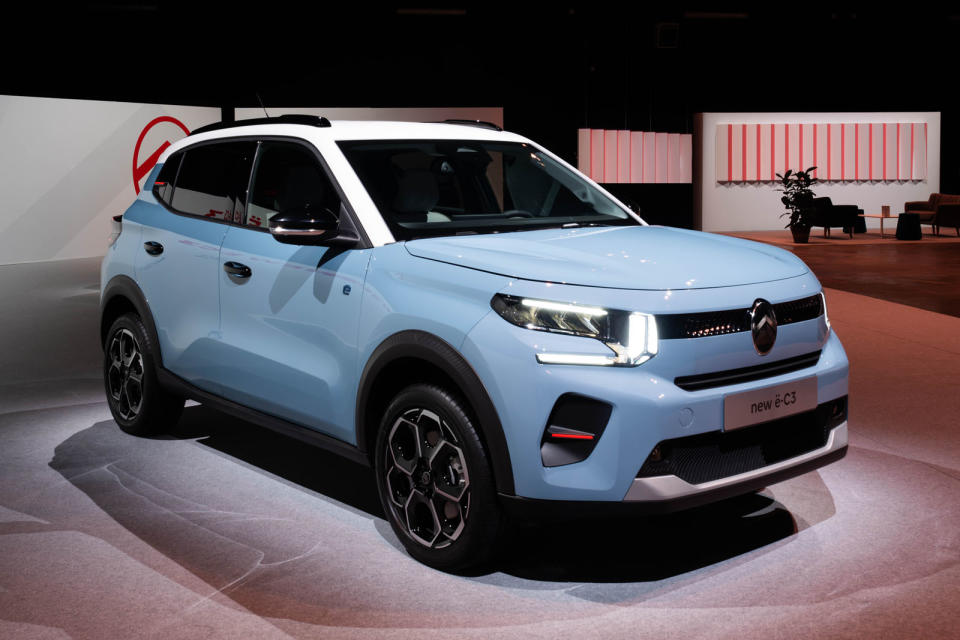
New ë-C3 is a higher-riding proposition, with a driving position set 100mm taller than before
Full pricing and specification details for the new Citroen ë-C3 have been unveiled, with the electric supermini set to become one of the cheapest EVs on sale in the UK.
Priced from £21,990 and set to open for order in July, the all-new ë-C3 undercuts most of the market, with just two other EVs - the £14,999 Dacia Spring and the £8945 Citroen Ami - coming in cheaper. It also comfortably undercuts all but the most affordable Chinese alternatives on the continent.
All ë-C3s are offered with a 44kW battery at launch, with a range of 199 miles (WLTP). An even cheaper version with a smaller battery will join the line-up in 2025, priced at €19,990 (£17,250) in Europe, although Citroën has yet to confirm whether this will be offered in the UK.
Power comes from a single electric motor, pushing 111bhp through the front wheel. It allows the ë-C3 to hit 0-62mph in around 11.0sec, with a top speed of 84mph.
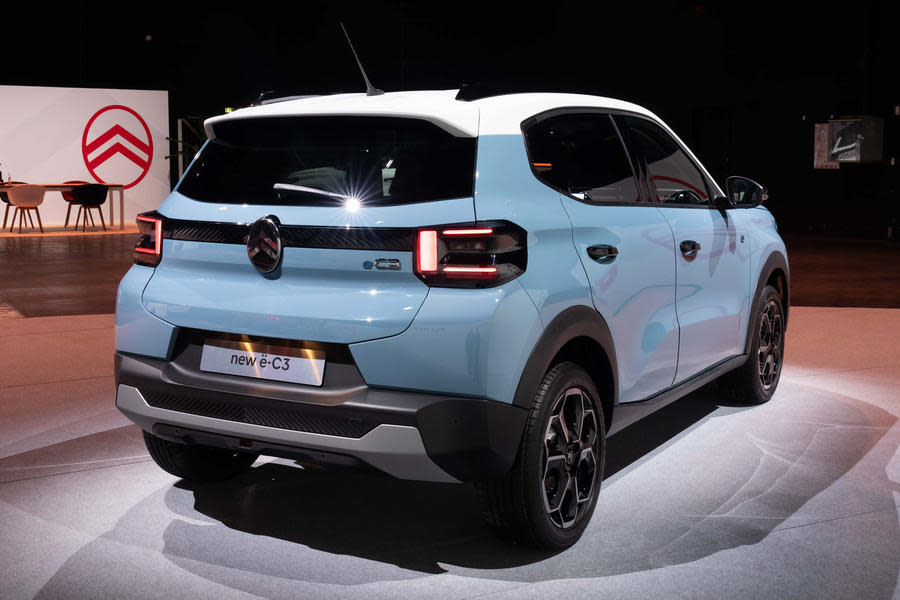
Two specification levels will be available at launch, starting with the ë-C3 Plus, which comes with a 10.0in touchscreen with Apple CarPlay and Android Auto as standard, plus comfort seats and a handful of safety aids including lane departure warning, active safety braking, cruise control and a speed limiter.
The range-topping ë-C3 Max adds a reversing camera, automatic air conditioning, a heated steering wheel, heated front seats and dark tinted windows. It also gets improved safety equipment, including speed camera awareness and live traffic information.
To ensure the ë-C3 remains usable on longer journeys, it can rapidly charge at rates of up to 100kW, enabling a 20-80% charge in 26 minutes.
Citroën insiders told Autocar they believe it to be the most affordable “proper” electric car on the market, noting that it’s a full-size five-seater, unlike the rival Dacia Spring Electric.
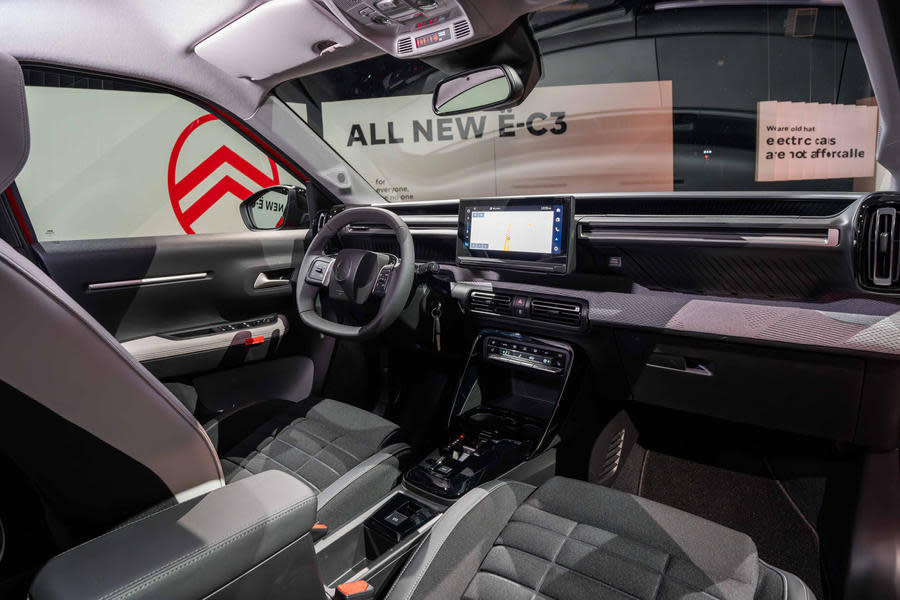
Key to achieving such keen pricing was the use of the cost-effective Smart Car platform, which was originally reserved for the separate ‘CC21’ C3 sold in India and Latin America.
Although the new Europe-bound C3 was conceived as an EV, this platform can support a combustion powertrain if there is sufficient demand (as was the case in the UK with the C4 X), and Citroën has left enough room beneath the bonnet for a petrol engine. A Citroën UK spokesperson confirmed to Autocar that the combustion C3 will target a starting price below £15,000, making it a rival to the Dacia Sandero.
The Smart Car platform was adapted to satisfy European regulations, gaining a stronger crash structure (the CC21 C3 infamously scored zero stars in Latin NCAP safety testing), and was given a host of tweaks to improve refinement, while the battery compartment under the rear seat bench was changed from a T-shape to a square to improve capacity.
The LFP chemistry brings several advantages: it is cheaper to produce, lasts longer and completely omits cobalt. However, LFP cells are not as energy-dense as nickel manganese cobalt, meaning LFP battery packs of equivalent capacity weigh more. Additionally, LFP batteries are typically more sensitive to external temperatures, with significantly reduced charge rates in cold conditions.
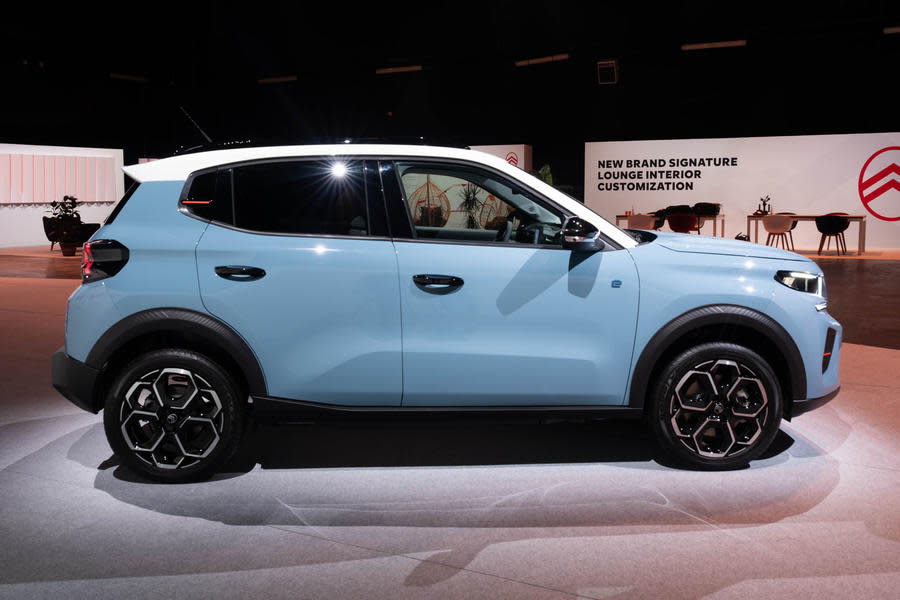
Citroën is confident that the relatively small range of the new C3 will be plenty, as project manager Guillaume Noël explained: “In the B-segment, we want to keep it simple. We know that, on average, most of our customers do less than 80km [50 miles] per day, and I’m sure that, even in cold weather, we will be able to meet that requirement.” In the name of affordability, no heat pump will be fitted.
Ride comfort was a priority for the ë-C3 (another spiritual link to the 2CV), so it features Citroën’s Advanced Comfort hydraulic bump stops.
The ë-C3 isn’t significantly longer or wider than today’s C3, but it is 100mm taller, boosting head room and bringing a more commanding driving position. Passenger space is significantly improved in other ways, too: Citroën claims the most generous rear knee room in the class.
Brand CEO Thierry Koskas confirmed that, although the two cars are now similar in proportion, the ë-C3 does not replace the Citroën C3 Aircross. Instead, the C3 Aircross will grow into a seven-seat electric SUV, also based on the Smart Car platform.

Inside the ë-C3, the goal was to provide a “zen feeling”, according to design lead Boris Reinmöller. “We just wanted it to be as simple as possible in terms of design,” he said.
There is a head-up display as standard, and the two higher trim levels feature a 10.25in infotainment touchscreen as standard, but the entry-level You variant replaces the latter with a Volkswagen Up-style smartphone dock.
A dedicated smartphone app will be created to give drivers access to music, radio, calls and sat-nav via their phone (although the touchscreen can be added as an optional extra). Every other core control is handled by a physical switch or button.
The brief for the exterior was to move away from the soft curves of the current C3, explained Reinmöller: “The earlier Citroëns were quite playful, almost to our liking a bit too playful, so we wanted to become a little bit more mature in its treatment.
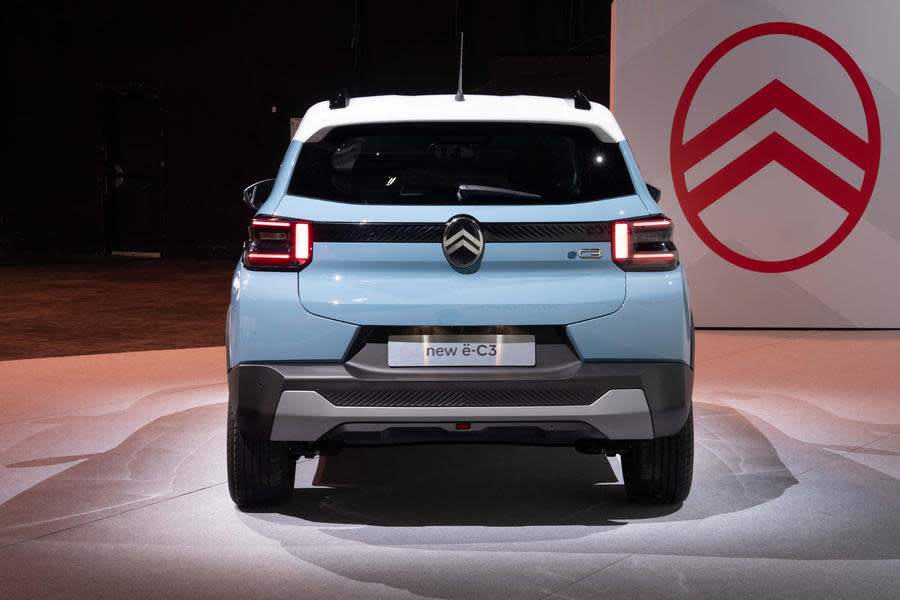
“In its section treatments, [we wanted] to bring out the muscles as well, although we stayed a bit soft and gentle – it’s not a Peugeot! It’s still a friendly feel in terms of surfacing, but it’s more defined.”
Nonetheless, the new ë-C3 does retain an element of fun in its design. There are two ‘colour clip’ inserts on each side of the car which allow the addition of swappable, colour-contrasting accents.
Three hues will be available at launch – orange, neon-green and white – but Citroën confirmed plans to expand the selection of colours, adding that graphics such as national flags may eventually become available.
The importance of the ë-C3 to Citroën’s future can’t be understated: the C3 currently takes 40% of the brand’s passenger car sales, according to the firm.
]]>

 Yahoo Autos
Yahoo Autos 